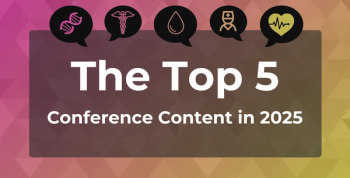
Progress Made in Diabetes Technology Coverage, Access Among Medicare Beneficiaries
Recently, 2 district courts secured a pair of victories for Medicare beneficiaries who use continuous glucose monitor technologies to manage their diabetes, while senators introduced bipartisan legislation aimed at increasing access to the Medicare Diabetes Prevention Program.
Recently, 2 separate district courts secured a pair of victories for Medicare beneficiaries who use continuous glucose monitor (CGM) technologies to manage their
In recent years, CGM systems have become popular among patients with diabetes as a way to quickly and accurately monitor their blood glucose levels, and in early September, Abbott’s FreeStlye Libre 2
On September 23, the second Circuit Court of Appeals ruled that Medicare beneficiaries can combine claims denied by Medicare to meet the dollar amount necessary for judicial review, according to a press release from Parrish Law Offices.
The case,
Previously, a Third District Court ruled that Medicare must cover CGMs, but ruled 2 of the 3 challenged decisions did not meet the $1500 amount-in-controversy threshold for federal court jurisdiction. The court also held the Medicare Act did not permit Bloom to cure the jurisdictional deficiency by aggregating the 3 amounts.
However, “the Second Circuit held, based on the text of the statute and reinforced by its regulatory and legislative history, that the Medicare Act does not prohibit plaintiff from aggregating his claims for the first time in district court,” according to
In a separate case,
Although these rulings mark a step in the right direction for patients, Medicare beneficiaries still face significant hurdles securing access to CGM technology, Parrish Law Offices states, as Medicare and Medicare Advantage plans continue to deny coverage of some CGMs. A class action lawsuit is currently filed in the District of Columbia seeking coverage as far back as 2012 for beneficiaries whose CGM claims were denied.
In addition to CGM technologies, virtual diabetes management programs have gained traction in recent years. In 2017, the digital health provider
“Noom’s virtual DPP program delivers the same positive outcomes as in-person MDPP programs and has the added benefit of being accessible anywhere and at any time, as part of our mission to help more people lead healthier lives,” said Noom cofounder and CEO Saeju Jeong.
The recently introduced
“To ensure that all individuals have the tools needed to combat this preventable disease, the PREVENT DIABETES Act would help expand access to virtual classes under the existing Medicare Diabetes Prevention Program,” Warner said.
Specifically, the MDPP Extended Model leverages evidence-based interventions to prevent onset of type 2 diabetes (T2D) in at-risk Medicare beneficiaries, but it is currently only available through in-person sessions. By expanding virtual access to the model, individuals in rural or medically underserved areas will be able to participate in the program.
“This commonsense and cost-saving expansion will ensure that more Americans at-risk of developing diabetes who are living in either rural or medically underserved communities, can participate in this critical program that has been proven to delay the full onset of this preventable disease,” Warner continued.
In the wake of COVID-19, HHS has temporarily allowed beneficiaries to access the program via a virtual platform, but bill authors argue that the change still excludes a number of providers and does not ensure long-term access to a virtual benefit.
“The introduction of the PREVENT Diabetes Act is a positive first step toward ensuring all seniors are able to access this critical preventive service through the Medicare DPP Expanded Model. We urge Congress to expeditiously advance this bill as part of its digital health care agenda,” Jeong said.
The bill received support from the American Diabetes Association, the American Medical Association, and the National Kidney Foundation, among others.
Newsletter
Stay ahead of policy, cost, and value—subscribe to AJMC for expert insights at the intersection of clinical care and health economics.









































